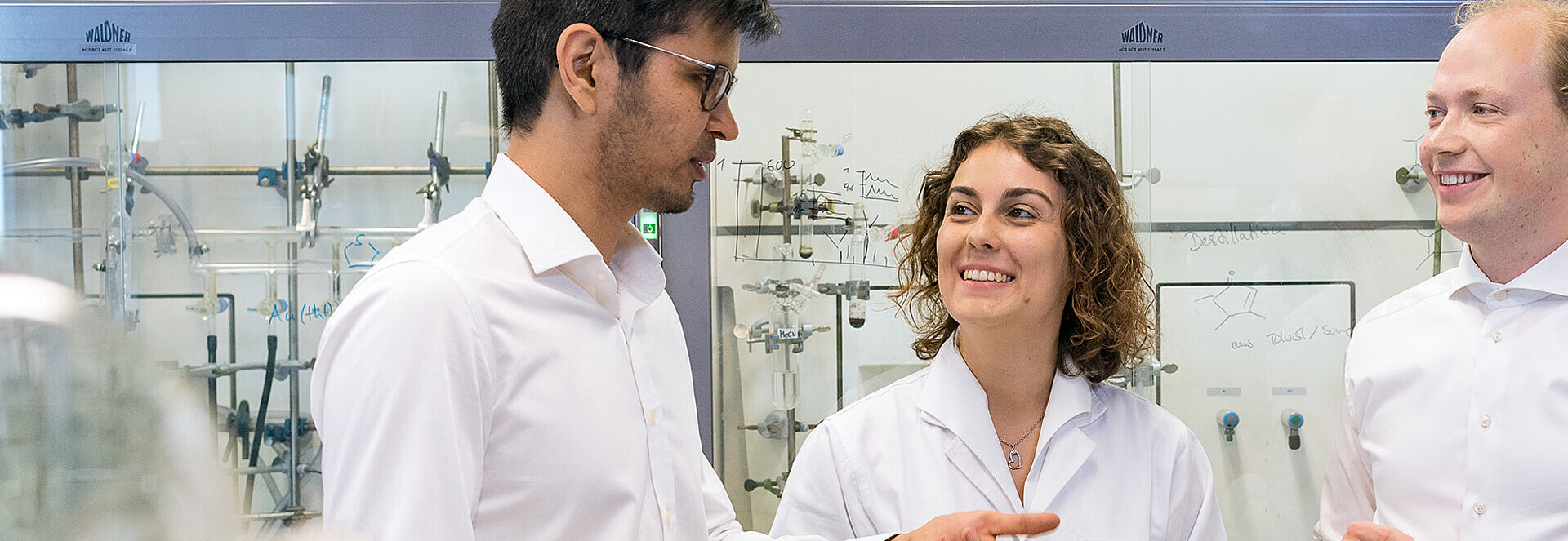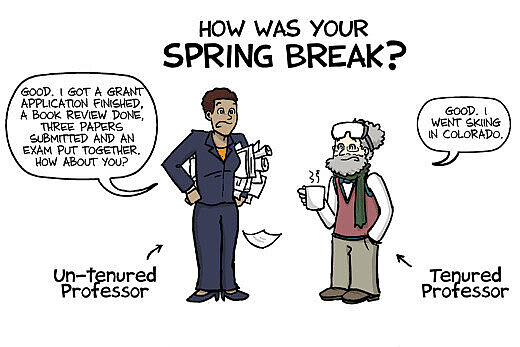The career goal of many researchers is to become a university professor. In Germany, types of professorship are determined according to a professor’s responsibilities and paid according to a special salary scale. This page provides an overview of the different levels of professorship. You will also find out about professorships at other research institutions.
Professor Designations
A professor at a Bavarian university balances research, teaching, and administrative work. The different levels of professorship are designated according to their salary level as determined by state regulations. You will see these levels advertised in job announcements. Professor positions are classified as W1, W2, or W3. In this system, the W stands for Wissenschaft, which means science.
Research universities in Bavaria are mainly structured according to a chair-based system. The faculties or schools are arranged into smaller teaching and research units known as “chairs” (Lehrstühle), which are led by a chaired professor (Lehrstuhlinhaber).


To obtain a professor position, you will first need to become eligible for professorship. Only then, you can begin applying for the so-called W2 or W3 professor positions. The main difference between W2 and W3 professors is that the latter are more experienced in their field, manage a larger staff, and therefore earn higher salaries.
W1 Professorships
A junior professorship is a temporary position and a stepping-stone towards W2 and W3 positions. As a junior professor, you have the same rights and responsibilities as a senior professor: this includes administrative responsibilities, advising doctoral students, and participating in committee work. Your teaching load will be much smaller—just five to seven contact hours per week—so that you can dedicate more time to your research.
W1 positions have a fixed duration of six years and are divided into two phases. In the first phase, junior professors undergo an evaluation after three years. If successful, they are eligible to apply for W2 or W3 positions.
Following a positive evaluation, junior professors often choose to extend their W1 positions to the full six-year duration. In the second phase, while applying for W2 or W3 professor positions, they can use the additional time to develop teaching experience or to publish papers.
W2 and W3 Professorships
There are different types of professorships at Bavarian research universities: chaired professors and professors without a chair.
A university chair, called a Lehrstuhl in German, is an academic unit led by a W3 professor. Chaired professors are responsible for teaching and research in a specific subject area at a university—chaired professors are always W3 professors. Chairs have their own academic and administrative staff who support the professors with technical and organizational tasks. While W3 professors generally have a larger research budget than W2 professors, both are in charge of research associates, advise doctoral candidates, and of course teach and produce new research.
W2 professors are usually associated with a particular chair and carry out research in the same field. These are not chaired positions, but they do involve many of the same tasks and duties. W2 professors have their own research focus and conduct their research independently. The greatest difference is that there is less personnel management compared to chaired positions. W2 professors can also be tenure-track professors.
Professorships and Tenure
Some professors are on the tenure track, which means they are guaranteed a permanent position after successfully passing a tenure evaluation.
Tenure-track junior professors undergo two evaluations during their W1 appointment. A positive evaluation after three years means they are eligible for a W2 or W3 professorship. At the end of six years, a positive tenure evaluation guarantees them a permanent W2 or W3 position at the same institution. Non-tenure-track junior professors are also qualified for W2 and W3 professorships after three years, following a positive evaluation. For the most part, they will have to apply for the professorship at a university other than their starting institution.
If W2 professors have fixed-term positions, they may also have the option of tenure. They usually undergo several assessments and performance reviews throughout their appointment, ending with a final evaluation. A successful evaluation can lead to a tenured W2 position, or promotion to a W3 professorship.
Joint Position at a University and a Research Institute
If your career path has taken you to one of Bavaria’s research institutes, you probably know that advanced researchers often hold a joint position at a university, with shared responsibilities and duties. Indeed, many positions at Bavaria’s non-university research institutions are connected with a university professorship. Salaries for these positions are comparable to those of professors at universities.
Professor Appointments
Individual universities have considerable autonomy regarding the specifics of hiring new professors, but some general guidelines apply to appointments across the state of Bavaria:
- Appointments are advertised publicly.
- There will always be an appointment committee, usually consisting of university faculty members as well as external (sometimes international) members who review applicants.
- The selection process often involves a trial lecture and takes into account the candidate’s publications, third-party funding, teaching experience, etc.
- The appointment committee then ranks and nominates up to three top candidates.
- After the university Senate has provided feedback on the candidate shortlist, the final decision is made by the university’s executive board.
- Once a university has made you an offer for a W2 or W3 position, negotiations begin. During this time, you will agree upon any additional compensation outside of your salary, personnel and equipment budgets, and other details related to the professorship.
Professor at a University of Applied Sciences
If you are fascinated by the practical applications of scientific research, but are equally drawn to academia, you can combine these interests at a university of applied sciences. To qualify for a professor position here, you will need at least five years’ professional experience—with at least three of these years spent outside of the university context.
Your work at a university of applied sciences will have a greater focus on the practical aspects of your research, and on teaching. Universities of applied sciences do not follow a chair-based structure. Professorships here are ranked according to the W pay scale and are typically classified as W2 positions. Universities of applied sciences do not have W3 positions.






